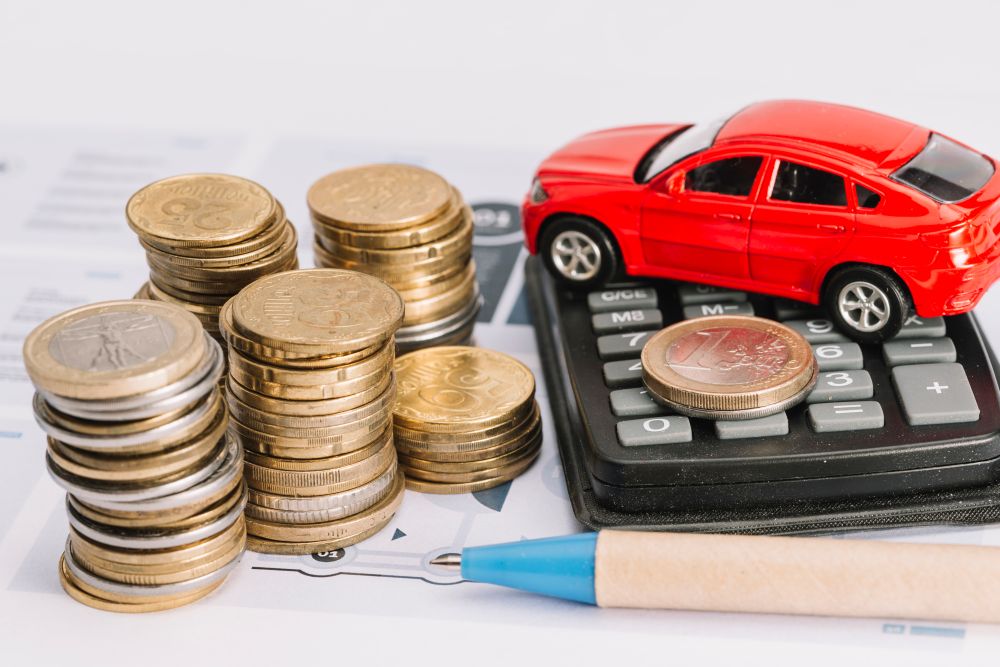Do you spend your income or pocket money on commuting more than you do on yourself? If you frequently find yourself in situations like these, you need to keep on reading this blog.
With the rising fuel costs every day, it is essential to develop coping strategies since we cannot overlook the immense importance of commuting in everyday life. Getting anywhere on time is considered an aspect of ethics and accountability.
Consequently, looking for better commuting options does not mean that one needs to sacrifice their comfort and convenience. We have brought some practical tips on saving money on commuting and helping you become a frugal commuter! So, let’s dig in…
1. Analyze Your Transportation Needs

If you aim to increase your transportation cost savings without compromising comfort and relief, you can start by analyzing your commuting requirements. This is a basic but extremely crucial step while planning transportation cost reduction. Take a copy and a pen with you, sit down, and critically analyze the frequently occurring chores that require you to step out of the house. Look into the essential activities that need to be carried out daily.
A few instances of this could be picking up and dropping off kids at school, going to work, etc. After sorting out your daily tasks, assess what needs you to commute weekly or every other day. This could include grocery runs or any other errands. Think of the possible commute-needing tasks that could be merged to save you trips outside the house. The options are diverse; you just need to plan according to your routes. A few examples are:
- Coming back from your office and stopping on the way to get groceries.
- Dropping your kid off at school and going to the salon in the meantime.
- Going to a mall to shop rather than looking for outlets at different places.
After you are done doing that, plan your week accordingly. Planning ahead is very likely to manage travel costs. Subsequently, keeping a keen eye and having an understanding of your needs is the first step in saving money on your commuting costs.
2. Optimizing Fuel Consumption

While searching for frugal commuting tips, analyzing and assessing your vehicle's efficiency, particularly in fuel consumption, are considered to be of utmost importance. Routine maintenance inspections are crucial to optimize fuel efficiency and reduce commuting expenses without sacrificing convenience. Make sure your vehicle is operating at its best and fix the problems that could reduce fuel efficiency by planning routine checkups.
This includes examining the fuel system, emission control system, and engine performance. With routine maintenance, you can spot and address issues like damaged oxygen sensors, worn spark plugs, or blocked fuel injectors that can greatly impact fuel economy. You should also ensure that your car runs well so that you can save money on fuel.
Moreover, maintaining the proper tire pressure ensures that your car rolls easily, which lowers rolling resistance and boosts fuel economy. When tires are underinflated, the engine has to work harder, which increases fuel consumption. Similarly, good alignment of the tires ensures they are all pointed in the right direction, minimizing friction and wear.
If you want to improve fuel efficiency, try to lengthen tire life, which ultimately reduces transportation costs by routinely monitoring and correcting tire pressure and alignment. Adding to the car care tips, engine friction can decrease, and fuel efficiency can be maintained with clean oil. By ensuring that clean air enters the engine, you can improve fuel efficiency and enable optimum combustion.
Additionally, you can maintain your car running smoothly with improved fuel efficiency and reduced transportation costs by adhering to the manufacturer's recommendations for routine oil changes and air filter replacements.
3. Using Public Transportation Frequently

If public transport is available in your city, it is worthwhile to explore your possibilities. If you reside in a modern city, you'll find multiple transportation options besides buses and trains. And you'll be pleasantly surprised by the options accessible, even if you reside in the suburbs.
In large cities, an established public transport infrastructure reduces the necessity for car ownership. An umbrella term called "public transit" includes different modes of transportation such as trains, subways, and buses.
Where public transit options help you control expenses, you would need to make certain lifestyle adjustments if you use them frequently. You can find a trustworthy service to get you to and from work (pick and drop services), or you can also take walking or cycling routes to run daily errands if you don't have a car.
There are several ways to reduce commuting expenses even while using public transportation. Buying weekly or monthly passes in bulk may result in discounts for each trip. Putting in a little effort and searching for and signing up for reward programs could also be useful. These programs are usually in the shape of student or employee discount cards.
4. Carpooling

Carpooling is one of the essential ideas for commuting on a budget. The deal with carpooling is when a few individuals pitch into the total cost of the ride or fuel that they are using in order to get to the same destination, usually. You can reduce your vehicle's maintenance costs by carpooling. You can achieve this by paying for tune-ups, oil changes, and other routine maintenance together with the individuals you carpool with.
Often, everyday carpooling arrangements are the only ones where the cost-sharing level is practical. If your carpooling arrangement merely has everyone taking turns driving their own car, splitting petrol costs for each shared ride can be the best cost-sharing solution.
For passengers, one of the key advantages of carpooling is that it is less expensive than hiring a taxi or a ridesharing service. Meanwhile, you can be dropped off immediately at your destination when you carpool. And you'll find it even more comfortable than taking public transit.
Other than saving money, you could reap benefits from carpooling. Making new acquaintances and avoiding the stress of rush hour traffic are both included in the advantages of carpooling. The experience may be more pleasurable if you carpool with individuals who share your interests, reside in your neighborhood, and are motivated by similar objectives.
5. Walking and Active Transportation

Walking and cycling is a major money-saving commute idea that has little to no expense or planning associated with them. You only need your two feet to get going. You can save money on fuel, public transit prices, parking fees, and vehicle upkeep by choosing one of these forms of transportation.
In congested metropolitan settings, biking and walking can be quicker than other forms of transportation over short distances. Time can be saved by avoiding traffic jams, parking conflicts, and attempting to catch public transportation.
Since it is no news that health must be an individual’s utmost priority, walking and cycling also support your health, apart from taking down your commute expenses. Walking and cycling both present fantastic chances for physical activity and enhancing general fitness. Walking helps build stronger muscles, increases metabolism, and enhances cardiovascular health.
Cycling offers a low-impact aerobic workout that improves joint mobility, strengthens the muscles, and increases cardiovascular fitness. The benefits of regular exercise include improved general health and lower healthcare costs.
You do not want to sacrifice your convenience in return for saving money. Cycling and walking offer a great deal of convenience and flexibility. You get control over your travel and become independent in choosing your schedules by easily managing across bike lanes or pedestrian walkways. Additionally, they provide you the ability to discover detours or bypasses that are not available to vehicles.
Don't Compromise Your Comfort and Choose Cost Effective Commuting Ideas
It is absolutely possible to practice frugal commuting without giving up your comfort. Simple steps like analyzing your commute needs, keeping your vehicle in check, choosing public transportation, carpooling, and walking or cycling are some realistic factors that could contribute to helping you cut down the amount you spend on commuting frequently.
These tips will help you financially and offer cost-effective commute options that are environmentally friendly, time-saving, and provide multiple potential health benefits. Lastly, adopting frugal commuting leads to efficient and enjoyable commute experiences.




